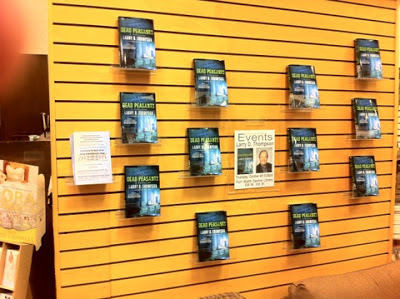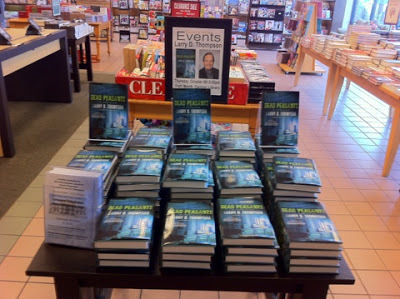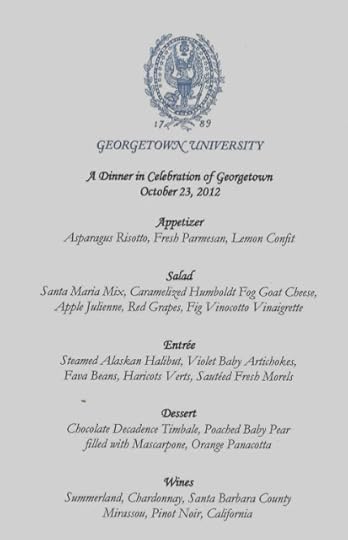Kenneth Atchity's Blog, page 225
November 2, 2012
Listen to My Podcast on Larry Thompson's Thriller Thursday
TT5 – The Messiah Matrix, with author Ken Atchity

Podcast: Play in new window
| Download
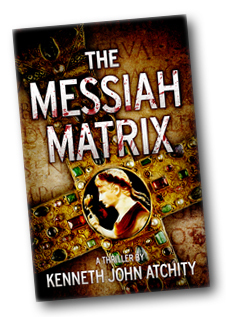
A thriller of Biblical proportions from The Story Merchant
Ken Atchity joins us once more to discuss his new novel, The Messiah Matrix,
how it was published, and prospects for this and other novels with
Hollywood potential. More than modern thriller (which it definitely is),
The Messiah Matrix is a thought-provoking, original examination of the origins and evolution of modern Christianity.
From the website:



Podcast: Play in new window
| Download

A thriller of Biblical proportions from The Story Merchant
Ken Atchity joins us once more to discuss his new novel, The Messiah Matrix,
how it was published, and prospects for this and other novels with
Hollywood potential. More than modern thriller (which it definitely is),
The Messiah Matrix is a thought-provoking, original examination of the origins and evolution of modern Christianity.
From the website:
The Messiah Matrix is a contemporary thriller
that takes the reader on an exhilarating quest from the ancient city of
Caesarea to Rome’s catacombs and beyond, and provides gripping
confirmation for all those who have ever wondered about the actual
historical existence of the “Christian Savior”.
The Messiah Matrix may prove to be the most
thought-provoking thriller ever written. Classical scholar and Yale
Ph.D. Dr. Kenneth John Atchity is the only author alive today capable of
creating this literary and historically-based masterpiece.

Published on November 02, 2012 00:00
November 1, 2012
Dr. Fuddle's Tree Lighting Festivities
ALL ARE INVITED
TO JOIN THE FESTIVITIES!
SATURDAY,
NOVEMBER 17, 2012
Musical
Performance from 12-9
LIGHT
THE HOLIDAY TREE AT 9 PM
WITH
DR. FUDDLE AND GOLD BATONS!

Dr. Warren
Woodruff, author of Dr. Fuddle and the Gold Baton
Will be signing
books all day in Dr. Fuddle’s Holiday Booth
$25 Hardback
Collector’s Edition/$15 Soft Cover
HOPE
TO SEE YOU THERE!

Published on November 01, 2012 12:51
October 31, 2012
Join Me At Women In Film Malibu Breakfast November 9th !

WIF
Networking Events
 WIF Malibu
WIF MalibuBreakfast with Dr. Ken Atchity, Ph.D.
Friday, November 9th
8:00 - 10:00 am
Malibu Chart House Restaurant
18412 Pacific Coast Hwy
Malibu, CA 90265
Ken
Atchity is
a "story merchant," writer, producer, career coach, teacher, and
literary manager, responsible for launching hundreds of books and dozens of
films. Event details: CLICK HERE
In This Issue
WIF Fall Membership Drive
WIF Board Election 2013: Vote today!
WIF Member News
WIF Networking Events: Speaker Series, Breakfast
Series, and Master Class
WIF Group Meetings
WIF Halloween Happy Hour
WIF AFI FEST 2012 Host Film: SUN DON'T SHINE
WIFI and Awareness Film Festival Present: MARGARITA
WIF PSA Production Program Meeting
WIFI Monthly Meeting
WIFTI Summit 2012
WIF Resources Page
Member Discounts
Join WIF on the Web
Dear Candace,
This
Fall is a great time to become a WIF Member! Our Autumn Membership
Drive is now through November 15th, so spread the word! 2013 WIF
Board Election time is here, so don't forget to vote using the link
below. We've got some exciting events next month as we welcome Ken
Atchity and WIF Board Member Madelyn Hammond at our Breakfast Series and
Lindsay Doran at our evening Speaker Series. Michele Gendelman also
joins us at LA Film School as we break down the "Anatomy of a
Pitch." We're proud to present our 2012 host film at AFI and WIF
International presents at Awareness Film Festival. It's almost
Halloween, so don't forget to stop by for networking (and candy) at next
Monday's Happy Hour. We look forward to seeing you at an upcoming
event!
Warm regards,
 Women
WomenIn Film
WIF Fall Membership Drive

October
15th - November 15th
Join WIF and become a part of a dynamic organization that is dedicated to
empowering, promoting, and mentoring women in the entertainment,
communication and media industries.
Free Master Classes, WIF Goal Support Group,
Writers Groups, and Actors Groups
Free Screenings
Discounts on Networking Breakfasts and Speaker
Series
WIF discounts on community film expos and forums
Join our PSA Production Program and WIF
International Committee
List your name and job skills in WIF's Membership
Directory and Career Lounge
For more details and
an application, visit wif.org/join!

Published on October 31, 2012 00:00
October 30, 2012
Stephen Gyllenhaal's Grassroots heads to the 9th Annual Bahamas International Film Festival - December 6 - 9, 2012
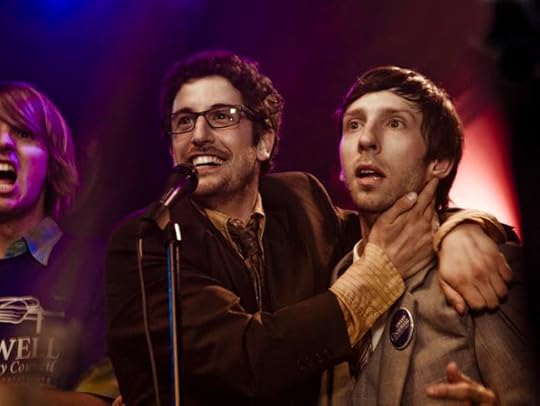
http://bintlfilmfest.com/the_festival/film_description/424
Credits
Director
Stephen Gyllenhaal
Screenwriter
Justin Rhodes
Producers
Peggy Rajski, Michael Huffington, Matthew Brady, Brent Stiefel, Jane Charles, Gary Allen Tucci, Kathleen Man Gyllenhaal
Principal Cast
Jason Biggs, Joel David Moore, Cedric the Entertainer, Cobie Smulders
Language
English

Published on October 30, 2012 00:00
October 29, 2012
Check out Story Merchant Client Wendy Eckel's Book Trailer - The Rosalie Hart Series
Published on October 29, 2012 00:00
October 27, 2012
Front Entrance of the Barnes and Noble Store in Fort Worth
Published on October 27, 2012 00:00
October 26, 2012
GEORGETOWN CAMPAIGN DINNER AT BEVERLY WILSHIRE
Published on October 26, 2012 00:00
October 25, 2012
Join Me At the Women In Film Malibu Breakfast November 9th !

WIF
Networking Events
 WIF Malibu
WIF MalibuBreakfast with Dr. Ken Atchity, Ph.D.
Friday, November 9th
8:00 - 10:00 am
Malibu Chart House Restaurant
18412 Pacific Coast Hwy
Malibu, CA 90265
Ken
Atchity is
a "story merchant," writer, producer, career coach, teacher, and
literary manager, responsible for launching hundreds of books and dozens of
films. Event details: CLICK HERE
In This Issue
WIF Fall Membership Drive
WIF Board Election 2013: Vote today!
WIF Member News
WIF Networking Events: Speaker Series, Breakfast
Series, and Master Class
WIF Group Meetings
WIF Halloween Happy Hour
WIF AFI FEST 2012 Host Film: SUN DON'T SHINE
WIFI and Awareness Film Festival Present: MARGARITA
WIF PSA Production Program Meeting
WIFI Monthly Meeting
WIFTI Summit 2012
WIF Resources Page
Member Discounts
Join WIF on the Web
Dear Candace,
This
Fall is a great time to become a WIF Member! Our Autumn Membership
Drive is now through November 15th, so spread the word! 2013 WIF
Board Election time is here, so don't forget to vote using the link
below. We've got some exciting events next month as we welcome Ken
Atchity and WIF Board Member Madelyn Hammond at our Breakfast Series and
Lindsay Doran at our evening Speaker Series. Michele Gendelman also
joins us at LA Film School as we break down the "Anatomy of a
Pitch." We're proud to present our 2012 host film at AFI and WIF
International presents at Awareness Film Festival. It's almost
Halloween, so don't forget to stop by for networking (and candy) at next
Monday's Happy Hour. We look forward to seeing you at an upcoming
event!
Warm regards,
 Women
WomenIn Film
WIF Fall Membership Drive

October
15th - November 15th
Join WIF and become a part of a dynamic organization that is dedicated to
empowering, promoting, and mentoring women in the entertainment,
communication and media industries.
Free Master Classes, WIF Goal Support Group,
Writers Groups, and Actors Groups
Free Screenings
Discounts on Networking Breakfasts and Speaker
Series
WIF discounts on community film expos and forums
Join our PSA Production Program and WIF
International Committee
List your name and job skills in WIF's Membership
Directory and Career Lounge
For more details and
an application, visit wif.org/join!

Published on October 25, 2012 11:25
October 24, 2012
Booklist Review Story Merchant Client Larry D. Thompson's Dead Peasants
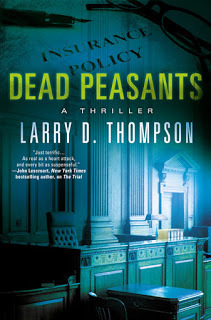
Dead Peasants. Thompson, Larry D. (Author) Oct 2012. 304 p. St. Martin's/Thomas Dunne, hardcover, $25.99. (9781250009494).
Jack Bryant is an übersuccessful lawyer who decides to retire after winning a huge wrongful-death case. Jack moves back home to Fort Worth where he can spend more time with his college-football-playing son. But he’s really too young to be retired, so he sets up an old RV in a bad part of town, offering free legal help to whoever needs it, and stumbles upon one of the biggest cases in his career. June Davis, widow, accidentally discovers that her husband’s former employer had a very large life-insurance policy, a “dead peasant” policy, on her husband, which made the employer the beneficiary. A string of seemingly unrelated accidental deaths are paying off handsomely for the financially strapped business. There isn’t much to the mystery that most readers won’t figure out in a hurry, but legal-fiction fans will still appreciate the courtroom scenes. The pacing is fast, the characters well developed, and the lawyer is likable. Grisham aficionados should be delighted with Thompson. — Stacy Alesi

Published on October 24, 2012 00:00
October 22, 2012
BLOGGING ON THE HUFFINTON POST
Good News From the "Omega Point"
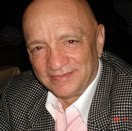 Has there ever been a more exciting time to be alive than today? With all the bad news that admittedly dominates the airwaves, our time is characterized by nearly hourly breakthroughs in the sciences and steady progress in outgrowing the ravages of organized religion like the attacks on the U.S. embassies in Libya and Egypt. As a former communications engineer for AT&T and professor of communications, to me the breakthroughs in communications are especially hopeful -- from Pinterest to Square, from GPS to Blu-ray, human beings are more in touch than ever previously imagined. Well, not quite.
Has there ever been a more exciting time to be alive than today? With all the bad news that admittedly dominates the airwaves, our time is characterized by nearly hourly breakthroughs in the sciences and steady progress in outgrowing the ravages of organized religion like the attacks on the U.S. embassies in Libya and Egypt. As a former communications engineer for AT&T and professor of communications, to me the breakthroughs in communications are especially hopeful -- from Pinterest to Square, from GPS to Blu-ray, human beings are more in touch than ever previously imagined. Well, not quite.In the 1930s a precocious Jesuit scholar Pierre Teilhard de Chardin, in his The Phenomenon of Man, imagined and predicted the very world I believe we are now rapidly approaching -- the point in human evolution he called "the Omega Point."
Teilhard's basic premise is that evolution is all about the development and perfection of the nervous system toward maximum consciousness, as creation on earth moved from simple one-celled organisms to the stunning complexity of the human body.
The Omega Point, the end-point of this evolution of consciousness, was foreshadowed in the nineteenth century by the invention of telegraph and radio -- just when our need for information exceeded our internal capacity to extend our sensory collectors. We simply had to reach out. In terms of the human nervous system and its insatiable need to collect and process exterior information, these inventions allowed us for the first time effectively to communicate through time and space -- dramatically externalizing the internal nervous system. Years before its actual appearance, Teilhard predicted television, by which images as well as sounds and writing could be shared through space and time -- what Dante Alighieri's Divine Comedy intimated in the visibile parlare, "visible speech," of the bas-reliefs on the walls of Purgatory.
At the Omega Point, Teilhard theorized, human beings, rising toward the consciousness that guides the universe itself, would be omniscient, ubiquitous, and eventually all-powerful -- the characteristics, not so coincidentally, ascribed by earlier Catholic theologians to God. Of course the ever-conservative Catholic Church took issue with the direction of Teilhard's thinking and placed his book on the index of forbidden books -- as though they'd forgotten that Genesis clearly proclaims that man and woman were created in "His image and likeness."
If we were created in the image of God (aka the consciousness behind the universe), why wouldn't we evolve toward being godlike? Isn't that the whole point of spiritual aspiration, as witnessed by the great mystics of Christian tradition from St. Thérèse of Lisieux to John of the Cross?
On a daily basis, when you're in danger of being brought down by all the crises and bad news, remember that we are fortunate enough to be experiencing the Omega Point all around us -- that time in human evolution when our consciousness as humanity becomes what Teilhard called "autonomous," or free from the limitations of space ("nonlocality") and time ("atemporality"). Most significantly, as we evolve in this direction we evolve beyond our restricted individual consciousness to a super-consciousness, in which the human species become a kind of "super person" transcending the individual persons it's comprised of. With any luck, that super person that is humanity will express -- and continue to strive for -- our higher values rather than our more demonic ones.

Published on October 22, 2012 11:38


